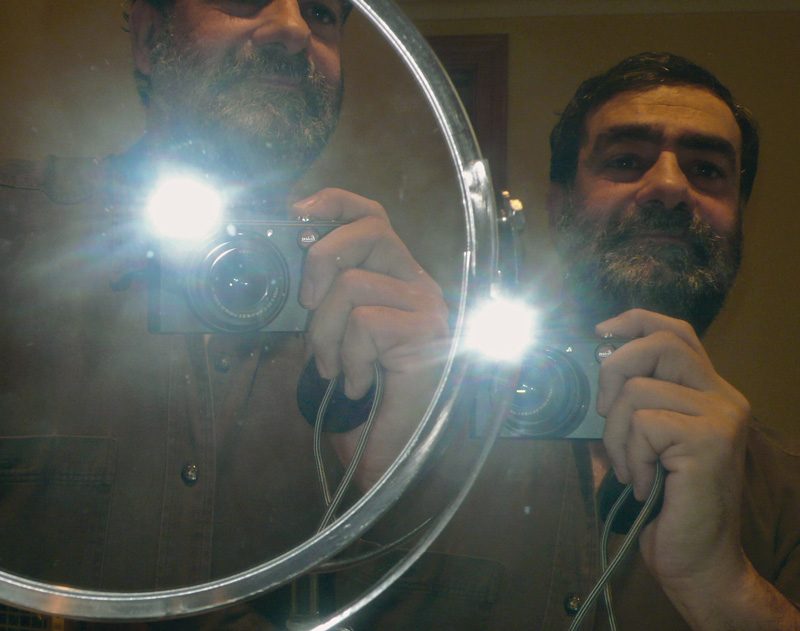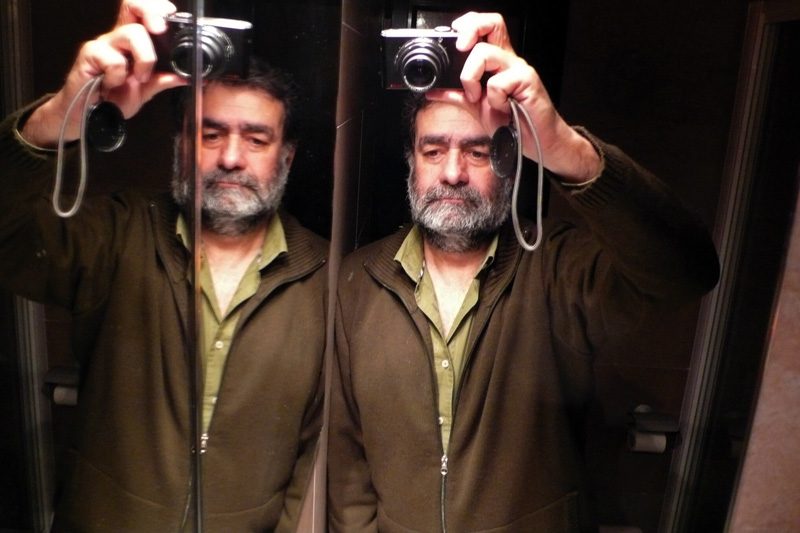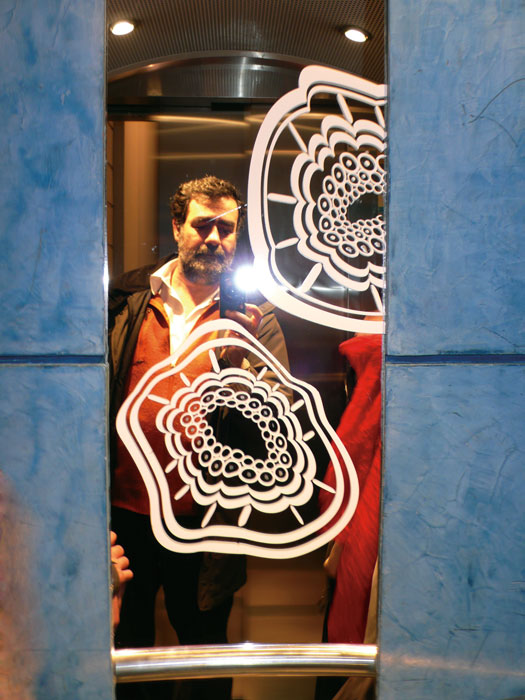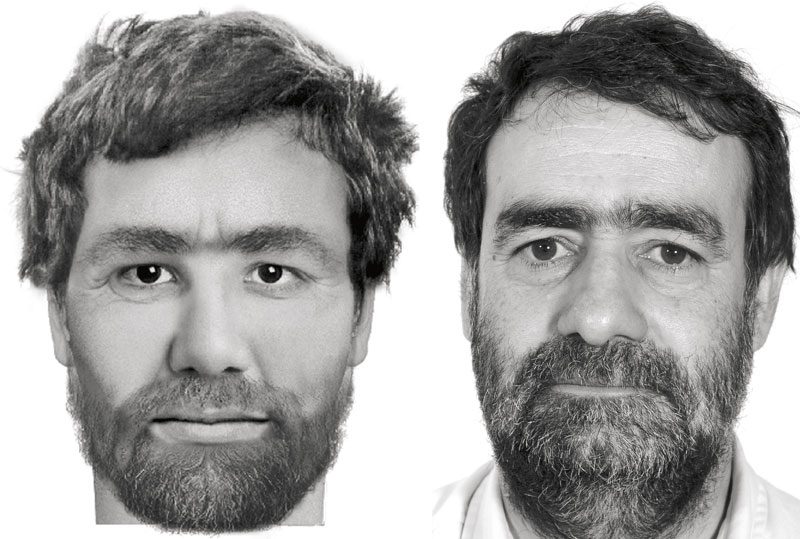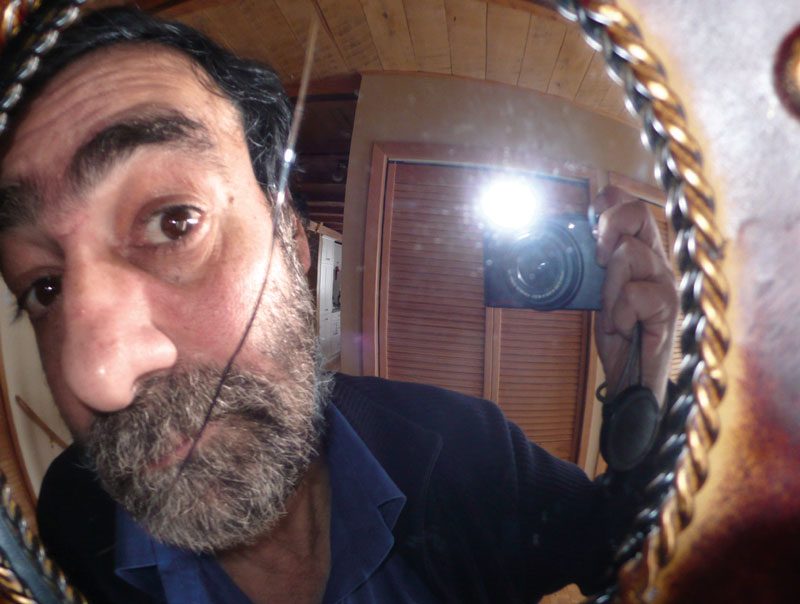[Fall 2015]
Following up on a first interview with Catalan artist Joan Fontcuberta published in this magazine in 2013 (CV 93), Ciel variable is marking the fourteenth edition of Le Mois de la Photo à Montréal, of which Fontcuberta is the curator, by reprinting an interview by Christine Palmiéri that first appeared in the digital magazine Archée (www.archee.qc.ca) in December 2014.
An interview by Christine Palmiéri
Christine Palmiéri :In your career, you have had exhibitions of your work, conducted theoretical research on photography, and organized international exhibitions. So, curating an exhibition isn’t new for you?
Joan Fontcuberta : I’ve devoted a great deal of time to curating because it is always related to my work, but I consider myself an amateur curator. It’s work that I enjoy, as it’s a way to reflect on an issue that interests me. In my work, I don’t see any difference between personal creative projects and curating projects, because the concepts and horizons come together.
C.P: But you have to deal with other imaginaries.
J.F: Certainly, but anyway the question of deployment of a discourse is made by choices and decisions that generate combinations of intentions.
C.P: The concept of post-photography is inscribed within a larger concept: post-history, which expands on the concept of post-modernity. The prefix post- implies that we are situated on the edge of something that is about to be completed or, on the contrary, on the cusp of something new that is beginning.
J.F: I must say, I’m not really comfortable with the term post-, which, in effect, refers to an ending. It would be like saying goodbye to photography. On the other hand, I think that it opens a door to enter or leave by. What is important is the positive aspect envisaged from this point of departure. The central idea is that photography is a means of expression, representation, mediation with the world. It was born at a historic time in the nineteenth century, a time of a particular climatology and ideology with the beginnings of the industrial and technocratic revolution. Today, we are in another, very different historic time; even though we are using the same tools, such as the camera with its lenses, the burden of ideological values of the image, such as the concepts of memory, truth, and identity, is shared with other interests. Photography has entered a more commonplace circuit of communication: we send it then delete it. It has entered a conversational space. We use it as an element in connecting with others. It is no longer attributed the duty of memory, as was the case for traditional photography, for which an obsession with truth developed.
Today there are multiple choices. We wonder whether photography is still photography or whether, little by little, it is being transformed into something else. The body is still there, but the soul is no longer what it was.
In the context of the program for Le Mois de la Photo, there will be exploration of these sorts of considerations. Perhaps photography will have to be renamed something different, as it is used for other functions. We must ask ourselves what relationship we maintain with the image. Photojournalism is in crisis, so why should we still take photographs today. This question has to be answered in a sociological, anthropological, and aesthetic perspective, knowing how to make a transition, stop, and reflect.
C.P: Some people have already contrasted photography against post-photography. I’m thinking of W. J. T. Mitchell, who was the first to address this concept a few years ago in The Reconfigured Eye, in which he posited that digital images are what brought us into the post-photographic era.
J.F: I don’t think we can consider technologies to be isolated elements. Technology always appears in response to a state of mind in society, a historical situation, in a concrete way. Since the 1990s, there has been an emergence, a reaction, a change that has disrupted the very ontology of photography because silver has given way to digital, which uses different tools. Pixels, digitizers, and software such as Photoshop have shifted photography toward painting and writing; that is, until now it was an element that produced very specific images. I would say that this constitutes an exception in the evolution of visual culture, because originally a photograph was an image generated over an entire surface. One moves the shutter over a surface and that creates an image that one can modify, intervene in, but each operation will modify the entire surface: the focus, the colour, and so on. On the other hand, with digital photography, we are evolving toward a structure of the image that resembles that of painting or writing, because there are graphic units such as pixels on which we can intervene in an isolated way, without involving the entire surface. It is the principle of the point or the line. It gives a completely different rendering. And that’s very important; it’s a first technological revolution.
We are now realizing that we are in a second wave, one at the level of technological consequences; it is taking us toward dematerialized images – images for which the support is less important. They inhabit the computer screen. They are here, there, and nowhere. This possibility for ubiquity of the image is possible because it no longer has materiality; that is what makes its circulation possible. This second digital revolution has been the consequence of the importance of the Internet, social networks, and mobile telephony, the omnipresence of surveillance cameras, and, of course the massive production of images. We have reached the point that we are taking photographs of everything all the time, and the paradox is that we spend all our time taking them and no longer have enough time to look at them. We have inverted the process, because what interests us now is no longer the image as result but the photographic gesture as relational act of communication. This changes the functional point of view – and the very nature – of the photograph.
Before, photography was reserved for solemn, historic moments. For example, in the domestic sphere, these were the celebration of marriages, instants that form the narrative biography of a family, and the decisive spaces of history such as war photographs – icons that stayed in our memory. Today, we take so many that they have become trivial; there is no longer a decisive moment because we take them constantly. And yet these are just banal moments. This brings us to a new situation in which we wonder about the function of the photograph, its importance for us as human beings or as citizens. There is no longer an idea of leaving a trace of our historic moment, our memory, our interests, our passions. It is all of these transformations and metamorphoses occurring in the sphere of visual culture that must be examined.
C.P: If we transpose these phenomena of the evolution and revolution of the photographic act into the context of art, do you observe notable differences in terms of the imagination or the aesthetic contributed by these new technologies?
J.F: Every change brings losses and advantages. There is always a price to pay. I believe that the new situation will enrich our repertoire because there are more tools and instruments. We can no longer imagine working without this software and without the Internet; they have become indispensable aids. On the other hand, there have been losses in artistic creativity. Before, people worked a lot with chance. Digital technology limits chance effects. For example, with traditional technologies, there were accidents, especially with certain types of film. But it produced marvellous errors – especially for the surrealists, who liked this. Today, if the image does not correspond to the expected aesthetic canons, we delete it and start again. We accept only photographs that repeat what we expect of them; we are thus lacking the element of the unexpected. However, new avenues are opening toward vaster horizons. We can work in the virtual sphere – for example, with Google Earth, we can have the visual experience of seeing the totality of our planet’s surface. Today, a reporter can work in the field or sit at a computer screen and choose screen captures. It’s a different experience of reality that multiplies its possibilities. For example, the image-search system, with the great availability of images, leads us to reflect on the need to produce even more images. Is this still necessary when everything is available? Many artists are reflecting on this question in an ecological perspective and developing strategies. Of course, it seems absurd to continue to contribute to this overabundance of images. On the other hand, I can recover and recycle what I need in a specific way. This leads us to a revolutionary consideration in the art sphere, which is that the actual making of images is no longer so important. What becomes important is management of the use of images. The value of the image is arises from its meaning, its significance; creation is a question not of fabrication or production but of the prescription and projection of meaning.
C.P: In the context of Le Mois de la Photo, how will you make your choices?
J.F: I’ll proceed according to the question of discursivity, but I will do so with some modesty and a certain pedagogical goal. I will propose debates and introduce artists who illustrate issues related to what I have just discussed with you: the massive production of images, along with the discussion about the question about the originality, quality, and function of the image. I’m interested in showing the contemporary creativity of Quebec and Canada in relation to these questions.
Rather than aesthetics, I will privilege concepts, ideas that will take different aesthetics – realist, documentary, or abstract – or that can be associated with specific times in the history of art, or an anaesthetic such as traditional conceptual art. For me, an aesthetic is a form of disguise. What interests me is the skeleton, the conceptual kernel, the kernel of the discursive issue.
C.P: I understand this choice, but an aesthetic also contributes to the expressiveness of a work’s content and is part of its process of enunciation – it’s not simply a disguise.
J.F: Yes, an aesthetic is necessary for reaching a result, but I would rather highlight the conceptual aspect of art production from Quebec and Canada. I’ll try to show a repertoire of different productions that involve the spheres of space, time, and identity – to observe how we speak of space, ourselves, and memory today. I’ll try to construct a fairly complete panorama of what I propose as the post-photographic condition.
Translated by Käthe Roth
Christine Palmiéri is an artist, art critic, exhibition curator, adjunct professor at UQAM, and director of the digital magazine Archée (www.archee.qc.ca). She holds a doctor ate in art studies and practices and has edited numerous monographs on art, including De la monstruosité. Expression des passions. Her theoretical research bears on the phenomena of mutation of living beings in a per spective approach. She has been an artist in residence in France, Quebec, Mexico, and elsewhere, and has presented video installations and lectures.

